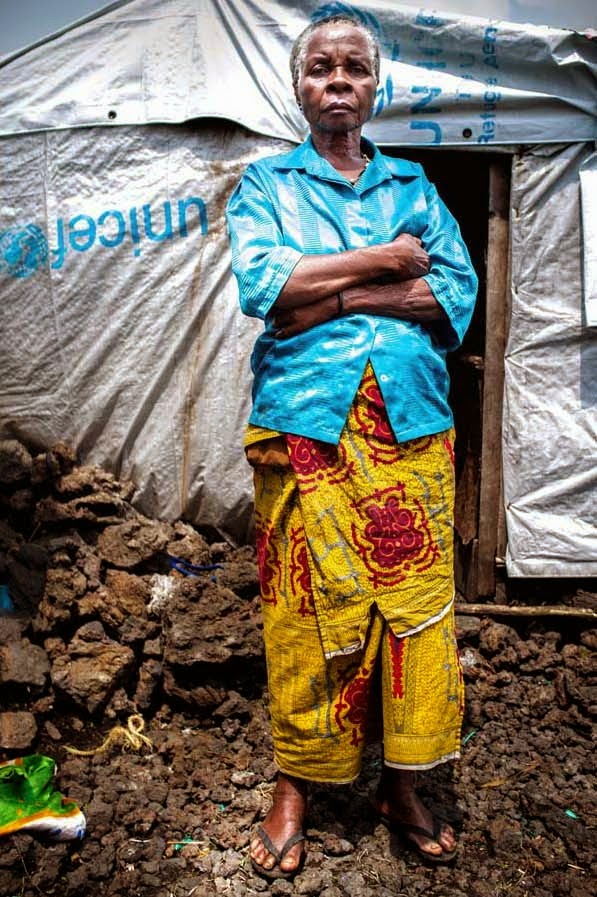All the photographs in Aubrey Graham's exhibition "Disneyland" are active collaborations between herself and the people being portrayed.
By Carol Clark
“I sat down with Marciella on some rocks in front of her house and had a chat, I asked her how she wanted to be represented,” recalls Aubrey Graham, a photographer and a PhD candidate in anthropology at Emory. “She said that she wanted to be shown suffering, no question about that. So I asked her how she wanted to portray her suffering. She took her beautiful headscarf off to show her gray hair and clasped her hands to her face. It was quite dramatic.”
Marciella was thrilled with the resulting photographs (above and right), says Graham. The striking images are part of an exhibition of Graham’s photographs on the ground floor of the Emory Center for Ethics, where Graham is currently an artist-in-residence through the Ethics and Arts Program. She will be giving a talk on the exhibition at noon on Wednesday, April 15, in the Center for Ethics, room 102.
“Portraits in Disneyland: Stories of Mugunga III,” on view through May, consists of photos that Graham made in collaboration with internally displaced people in a camp near the humanitarian hub of Goma, in the eastern Democratic Republic of the Congo (DRC). Graham describes the camp, known as Mugunga III, as having “been visited and photographed by nearly every errant aid worker, VIP, celebrity and journalist who arrives in the region – to the degree that its frustrated coordinators casually dubbed it ‘Disneyland.’”
Graham spent a year in the DRC, including eight months creating the images. “The change over time was amazing,” she says. “You get looped into peoples' lives in really intricate and wonderful ways. I loved getting invited back to photograph the progression of a pregnant woman, then her newborn, and then the baby sitting up.”
Though Marciella wanted to show herself as “suffering,” other subjects wanted to be portrayed with a prize possession, such as a radio, or going happily about their daily routine, surrounded by the people they care about most.
“I want to unsettle how we think about life in those camps and the people in them,” Graham says. “They are not always miserable.”
Her original question was: What are the implications of humanitarian photography in a region saturated with aid for over 20 years? “Through my research,” she says, “that question has expanded to look at both local Congolese and humanitarian photographic practices to understand the broader implications of photography upon identity and the politics of the region.”
To learn more about Graham’s project, read this Q&A with her on the Laney Graduate School web site.



No comments:
Post a Comment